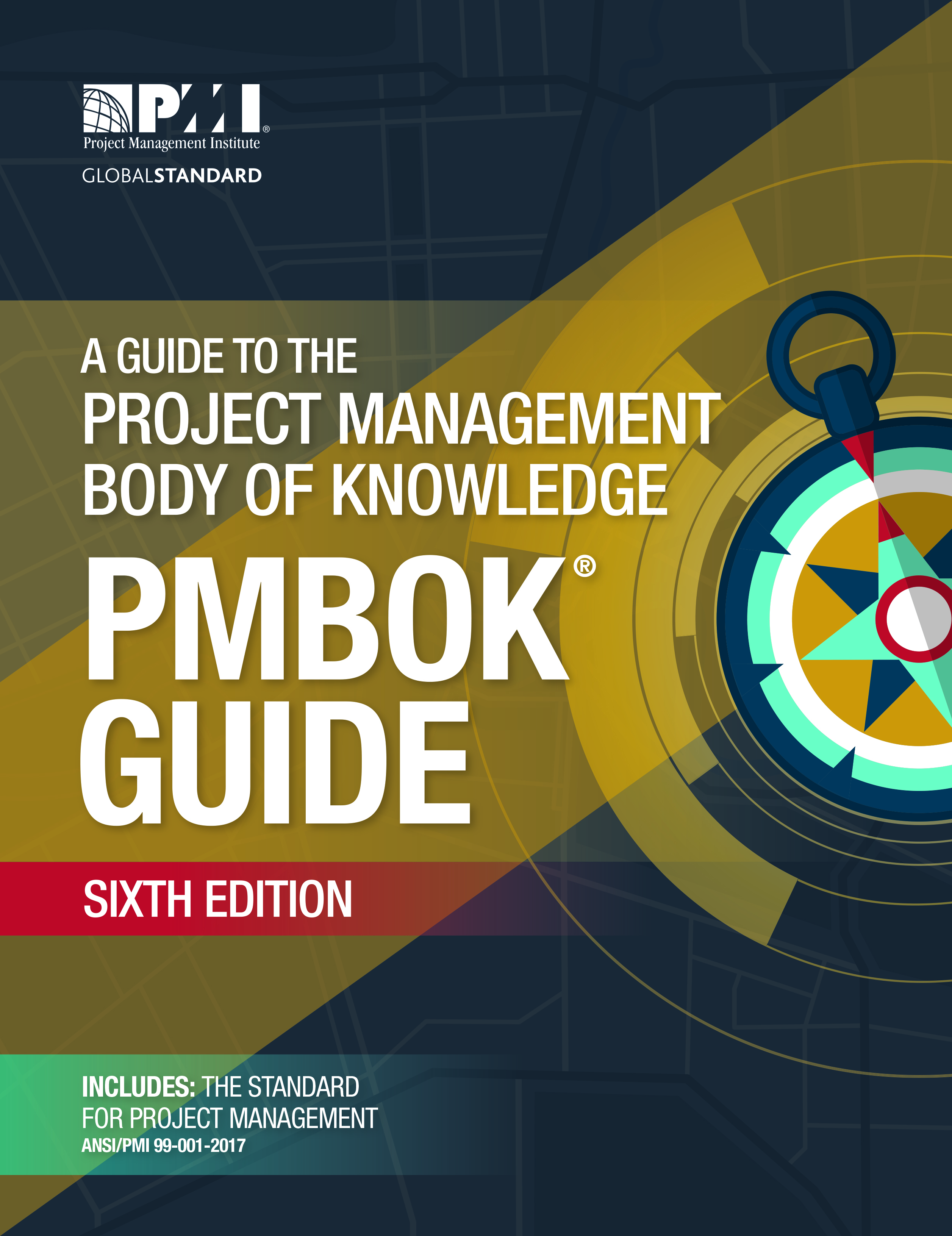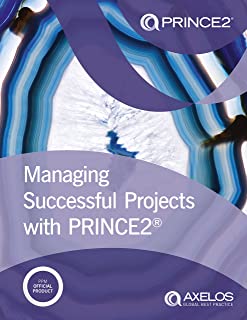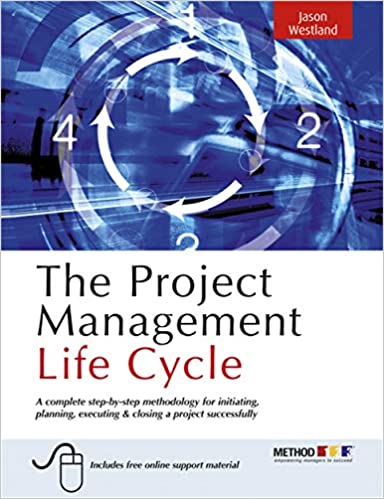Project Initiation
...
Critical Factors to Ensure Your Project is Successful
Project Initiation brings together key, foundational documents to:
- Define the project
- Document the business decision for the project
- Specify project sponsorship, and
- Provide on-going project governance.
Project Initiation, by performing several critical steps, ensures a successful project start-up and gives you a solid head start to achieving your project objectives. Not performing these critical steps virtually assures project failure.
So, start strong to finish strong....

Project Initiation - "Birth" of a Project
Typically (99% of the time), a project is born out of a business wanting to incorporate the effects/benefits of change. A project is the manifestation and implementation of a change to the business.
For example, a telecommunications carrier decides to offer a new wireless data service. They identify a huge market for the service and the ROI is considerable. Unfortunately, their current billing system cannot process data records, in order to produce a bill for the customer. They determine that a system change is required – either adapt the current system; build a new one; or procure a new 3rd Party application. This, along with the budget, ROI calculations, and decision by senior management to proceed, is the beginning of a project.
Projects in supplier organizations, like software companies and hard goods manufacturing companies, have their birth as the sale and delivery of a purchased item by their customer.
Likewise, a “CHANGE” in the customer’s organization was the likely cause of this procurement - a change in the customer’s business calling for a larger server, a process change requires a new software application to manage the changed process, or even the opening of a new market requires a new office location and supporting infrastructure.
In the construction industry, building and renovation projects are undertaken based solely on change; driven by the “highest and best use” of the land, as well as consumer demand.
Within an individual's environment – things like, family addition, divorce, move away from parent’s home, and the need for an investment – are all changes which might demand a housing change, which in-turn prompts new construction.
Always remember…
A project is created for the implementation of the perceived beneficial effects of change.

Project Initiation Document
Your organization may use various methods to initiate a project -- some very formal, others not so much.
Here are two formal methods for Project Initiation and documenting the project approval and authorization.
The Project Charter -- PMI’s PMBOK® recommends the use of a Project Charter as the project initiation document. The Project Charter, as defined in the PMBOK® Guide (Third Edition), is:
- ”A document issued by the project initiator or sponsor that formally authorizes the existence of a project, and provides the project manager with the authority to apply organizational resources to project activities.”
The “project initiator” or Project Sponsor is external to the project organization and at a level that is able to fund the project. The development and issuance of the Project Charter by the project initiator links the project to the ongoing work of the organization.
The Project Charter documents:
- Business Needs (at a higher level than detailed business requirements)
- Project Justification (which may refer to other documents, such as a feasibility study, business case, or other business needs analysis)
- Current Understanding of Requirements
- Project Deliverable or Work Product intended to satisfy the Customer’s requirements.
According to the PMBOK® Guide, the content of the Project Charter should include, either within the document or as a reference to other documents, the following:
- Business needs, high-level project description, or product requirements that are the focus of the project
- Specific customer and other stakeholder project needs or expectations
- Project purpose or justification
- Assigned Project Manager and authority level
- Summary milestone schedule
- Stakeholder influences
- Functional organizations involved and their participation
- Organizational, environmental, and external assumptions and constraints
- Business case justifying the project, including a return on investment (ROI) and preliminary budget summary
Follow this link to open and use a Project Charter document template, which complies with PMBOK.
The Project Mandate -- The PRINCE2® Manual describes the use of a Project Mandate document as the project initiation document. PRINCE2® sets out what ought to be in a Project Mandate, but is not strict about all of the content. PRINCE2® allows for the Starting Up a Project (SU) process to sort out the initial information needed and reach the minimum level of organization and understanding prior to initiation of the project.
The Project Mandate is essentially instructions from corporate management or programme management to start using the PRINCE2® methodology, in the form of a project, to achieve the desired business objectives. The content and complexity of the Project Mandate is dependent on the needs of the project.
Project Mandate topics might include:
- Authority responsible
- Background or Purpose for the project
- Project objectives
- Scope (a description or outline)
- Constraints
- Quality expectations
- Business Case outline (and description)
- Reference documents or sources of information
- Indication of the project executive (or project sponsor, in PMBOK® terms) and recommendation for project manager
- Who the customer(s) are
- Who the user(s) are
- Other Stakeholders
At a minimum, enough info should be available to identify the Project Executive (Sponsor) and the subject matter of the project (description of the scope).
Follow this link to open and use a Project Mandate document template, which complies with PRINCE2.
Other Project Initiation Documents -- Most other project management methodologies (or quasi-methodologies), such as RUP, TenStep, IPMA’s “IPMA Competence Baseline” (ICB, Version 3, 2006), and others, use some form of Business Case and/or Project Charter document to initiate a project.
Whether these companies agree or not, most of their project initiation documents are based on those of PMBOK® and PRINCE2®.
Project Initiation Structure & Governance
The major differences between the various PM methods are:
- “who” prepares the initiation documents
- “when” are the document(s) prepared in the Project Initiation process, and
- “what” governance body or person approves the Project Initiation document.
One of the strengths of PRINCE2® is the establishment of an accountable Project Board to provide oversight and support – to own the project and ensure that it is successfully completed.
The Project Board is responsible for all project initiation activities, including:
- Developing and “owning” the Business Case
- Developing the Project Mandate document (I have also seen this called a “Project Terms of Reference” document) to define and initiate the project
- Authorizing the Project Manager
- Ensuring the project resource requirements are understood and committed to the first Stage, “Initiating a Project”
In my experience, the Project Mandate may be prepared as the first document authorizing the project. In this case, the Project Mandate was prepared by an Executive, who later sat on the Project Board. It was prepared prior to developing the Business Case and prior to establishing the Project Board. In this case, the Project Mandate was delivered before the beginning of the “Starting up a Project” stage. The Project Board, during the “Starting up a Project” stage, used the Project Mandate document to develop the Business Case and select the appropriate Project Manager.
On another project, the Project Mandate document was produced by the Project Board, following the approval of the project by the Executive Management Team, and prior to the “Starting up a Project” stage. Immediately following the approval of the Project Mandate document, the Project Board then completed and submitted the Business Case for approval.
According to PMBOK®, the Project Charter document must initiate the project. It is prepared by the Project Sponsor, with or without the assistance of the Project Manager (the PM may not be selected/assigned yet).
The approval and funding of the Project Charter, though a process outside the PMBOK® defined processes, officially authorizes the project. The Project Charter, similar to the combined Project Mandate and Business Case described in PRINCE2®, links the project to the business objectives and is the foundational document used to authorize and initiate the project.
Typically, an internal project will be preliminarily agreed-to by senior management or a senior executive of the sponsoring organization. The project sponsor then produces the Project Charter document with sufficient detail to present to senior management, obtain the authorization to proceed, and obtain the funding and resource commitment. This approval, authorization, and funding commitment initiates the project and leads to the selection/appointment of a Project Manager.
The Project Manager’s planning specifies the resources and skills required. Working under the authority of the Project Sponsor, the PM reaches out through the organization to obtain the resources required. During this part of the Initiation Phase, the PM will also produce a Preliminary Project Scope, which when approves will begin the Project Planning Phase. The approved Project Charter and the Preliminary Project Scope are the two initial inputs to begin the Planning Phase.
According to PMBOK®, the Project Sponsor is the primary
governance entity during the Project Initiation Phase. PMBOK® also
describes interactions with senior management for approvals, resource
authorizations, and funding/budget approvals. However, the PMBOK® Guide
specifically states that, “[Project Charter] approval and funding are
handled external to the project boundaries.”
Just from these brief descriptions, you should see the difference in governance structure between PRINCE2® and PMBOK®.
If you are initiating a project which will require a strong governance structure, I recommend you follow PRINCE2® governance methods by obtaining the authorization for a Project Board.
Project Management Body of Knowledge
Apply the Project Management Body of Knowledge for consistent project success!
Project Management Process & Lifecycle
Using the Project Management process and the lifecycle of projects to ensure your project’s success.
Project Management Office - The Advantages to Your Organization
Establishing a Project Management Office – Realize improved project performance and project ROI benefits.

RECOMMENDED .. With Your Project Management SUCCESS in Mind!
A Guide to the Project Management Body of KnowledgeThe Project Management Life Cycle
Project Selection Under Uncertainty : Dynamically Allocating Resources to Maximize Value





New! Comments
Have your say about what you just read! Leave me a comment in the box below.